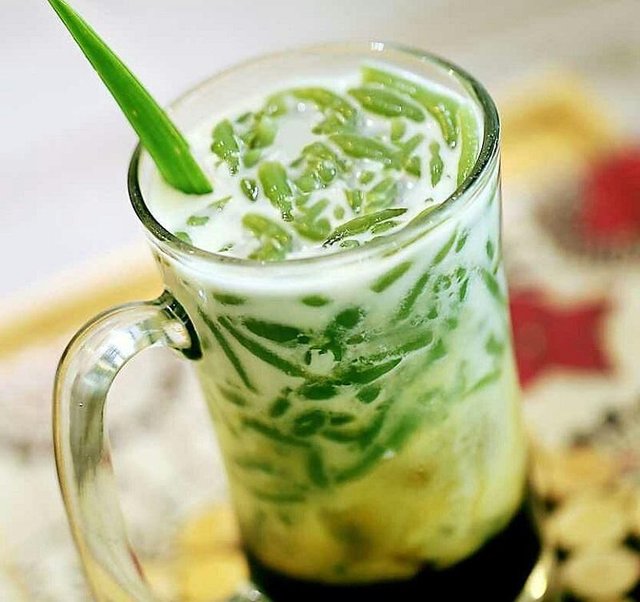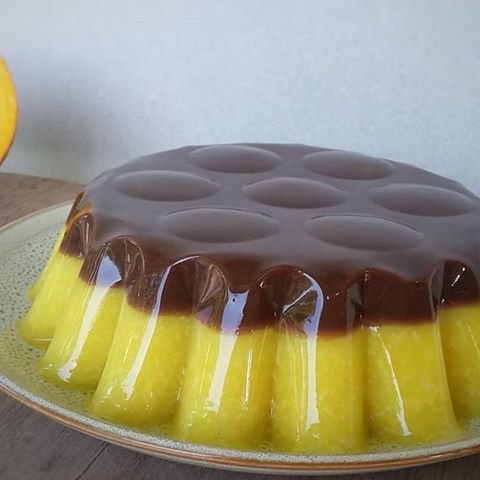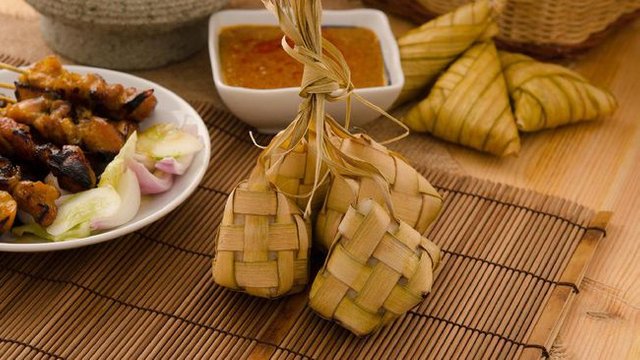Dreams, Memories, and Taste of Indonesia Cuisine (Illustration)
Talking about diversity in Indonesia has always been an interesting thing to share, because diversity itself is a very personal story experience, meaning it is felt by yourself, but must be experienced with others from backgrounds and habits that are completely different from oneself own. In telling the diversity in Indonesia related to its culture, of course there is a lot of beauty within the diversity. For example, in terms of art, language, customs, until human nature. In the experience of diversity, always gratitude has been placed by the Supreme God in the land of this country and meet with the beauty of each life of the community.
In experiencing Indonesia's cultural diversity, I think that we do not have to travel far to visit every place in the country, because at the present time, the limit for interacting seems to have thinned out. Something typical from different parts of the country can now be recognized in many ways instantly, such as the daily food we eat. There are many stories from our daily serving of dishes, a very long story about their origins, stories of failures in creating delicious cuisine, stories of long journeys how they can reach us, to the story of the cooker alone in learning how to process until cooking food and beverages.
The interesting thing is always coming from something simple, something essential but rarely realized its existence, but when it is realized will make us grateful. Indonesian cuisine and drink for me is something special, because I have known since I was a child. It is these dishes that build a standard for my taste bud, making my taste bud to sort through whatever food I can eat and what is not, where the food is right and what is not. Accustomed to Indonesian cuisine makes me always miss if I in a few days do not get the taste of cuisine that seems to have formed in my subconscious, especially when later I go away, I can not imagine what it feels like.
The taste of Indonesian cuisine is always unique from every region. In Java itself, for example, East Java specialties are identical with spicy and slightly savory taste, while in Central Java and Yogyakarta it is synonymous with a slightly sweet taste of cuisine, while Padang cuisine is always rich in spices and spices that seem strong as well as in terms of drinks. The flavors of different dishes, but like this one feel right on my taste bud, enrich my experience of cuisine from different regions. In addition, these dishes are also reminiscent of how rich and fertile the world of Indonesia is, because there are many different types of plants and foodstuffs to be processed, so many combinations that can be created to create cuisine with extraordinary taste and how great the creativity of resources human being so as to be able to find the best flavors of the many combinations.
For me personally, the experience of processing ingredients of Indonesian cuisine also keeps its own story. The story of cooking Indonesian cooking always reminds me of my mother and grandmother. We used to spend our morning at weekend in the kitchen, cooking up the ingredients while telling our life experiences, so what happened was that my grandmother and my mother left their knowledge about cooking to me and my brothers while sharing their stories in the past. We laughed together, laughing at the absurdity of the past, all the while strengthening the bond between us.
My grandmother who happens to be a frequent mobster of the city in her youth, so has many stories that tell the side of the past life in this country through her point of view. With her simplicity, she told me about the Indonesian times that I would never experience. She described how the cities of the past, the transportation she often used at the time, the words in Indonesian which were often mixed with local languages and foreign languages, the original manners derived from family, songs, to clothing traditional that she still used often in her youth with her friends.
There are many diverse stories that he told me in the morning cooking times of the weekend, so I invariably wait for his stories. Although sometimes the stories are told over and over until I know the way the story, but the stories always remind me that there is still much I do not know about Indonesia. The country is so vast, so diverse, so abundant that unexplained sides are unfolded. For me, Indonesia always keeps unique stories in its diversity and someday, I will hear and feel for myself so that later I can share my stories with people around me, even to my next generation. I believe that diversity is not something that can divide the nation, but something that its existence needs to be maintained, because many things and noble values in every aspect of life that can be inherited but waiting to be touched and implanted in our minds all to make we humans are virtuous and noble.
Well, therefore on this occasion I will bergai little story of some typical cuisine / beverages that exist in Indonesia that almost everyone here know him, are you curious? Let's see together :)
1. Es Cendol

Es Cendol is one of Indonesia's most popular beverages. Basically Es Cendol comes from the Sunda region. Cendol in this drink is made from rice flour or sago flour mixed with brown sugar and coconut milk. The presentation usually also uses grated ice cubes. Almost the same as Es Dawet indeed. It's just Ice Cendol the material usually uses hunkwe flour that is made from green beans, while Es Dawet usually use rice flour.
Es Cendol has a sweet taste, savory and fresh. The way of making it is quite easy. Materials needed include hunkwe flour, rice flour, salt, jackfruit, brown sugar, sugar, pandan leaves, pandanus leaf water and coconut milk.
How to make it first, mix to flat flour hunkwe, rice flour, water pandan leaves and salt into a pan, stirring evenly. After the dough is thick, prepare boiled water inside a small basin with a cendol mold on it. Then pour the dough into the mold and press the mold until the dough becomes small shavings. If so, take the finished cendol and drain.
For the syrup, first boil the water until cooked and then enter the brown sugar, sugar and pandan leaves until they are all mixed and thickened. While the coconut milk cook to boil and do not forget to give a little salt and pandan leaves. Finally enter cendol, jackfruit or black sticky tape when going into a glass or bowl. Pour the brown sugar syrup and coconut milk and add ice cubes. And Es Cendol was ready to serve. This drink is very popular for the people of Indonesia. Its existence is also very easy to find in almost all cities in Indonesia. Below is the original appearance of es cendol.

2. chocolate pudding kabocha

I'm a big fan of kabocha aka pumpkin. The pumpkin with this cucumber is said to contain beta carotene, vitamins A and C, various minerals (potassium, iron, phosphorus, calcium, sodium, etc), carbohydrates, proteins, and fats. Usually this pumpkin is made a compote. Well, yesterday when I got this pumpkin in the stall had time to make a steamed cake. Because the materials in the house is limited and I'm lazy shopping material, finally turn the bow to make pudding. Moreover, I once read the recipe yellow pumpkin pudding in a tabloid, although the pudding that I make is not exactly the same recipe alias has been modified in accordance with the existing ingredients. I think almost everyone around the world knows whose name pudding is not it? Below is a picture of a delicious pumpkin pudding :)

3. Ketupat and Meaning of the Philosophy

The feast of Eid is getting closer, the Muslims welcome it and will celebrate it with joy. One dish that is inseparable from the Eid is a ketupat. No wonder at this time, ahead of Lebaran began many popping up the seller of coconut leaves that will be woven to wrap the ketupat.
From where exactly the origin of the diamond, who was the first to popularize it?
Like other traditions in Indonesia usually have history and background, there is also something philosophical meaning of these traditions. What about ketupat? This diamond tradition is thought to originate from the time of Islam's entry into Java. Sunan Kalijaga was the one who first introduced ketupat to the Javanese community. Sunan Kalijaga, or also known as Sunan Ampel cultivate two times bakda, namely bakda Lebaran and bakda kupat (Ketupat Day). Bakda Kupat begins one week after Eid. On the day that called kupda meat, in the land of Java at that time almost every house seen weaving the rhinoceros from young coconut leaves. Once cooked, the couples are delivered to the elder relatives, and become a symbol of togetherness.
Today
In the days of Sunan Ampel after Eid, on bakda kupat, or a ketupat event that was held one week after Idul Fitri Eid, at that time they continue the fast Shawwal first for 6 days, then I will kupat. In contrast to the present day who always eat ketupat when Eid arrives. Usually this ketupat can also be served along with his typical Lebaran cuisine such as chicken opor, lodeh, curry, stews, satay, even pecel vegetable typical Java.
Other typical foods that use ketupat, among others, kupat tahu (Sundanese), katupat kandangan (Banjar), Grabag (Magelang district), kupat glabet (Tegal City), Coto Makassar (from Makassar, Ketupat called Katupa), lotek, gado that can be served with ketupat or lontong. Ketupat can also be served to accompany the satay, although lontong is more common. There are two main forms of diamonds that are 7-pointed (more common) and angle-parallelogram 6. Each shape has a different plaiting groove. To make ketupat it is necessary to choose a quality janur that is long, not too young and not too old.
The Meaning of Ketupat Philosophy
Ketupat has a philosophy that means deep enough. The outer part of the ketupat is composed of woven coconut leaves quite complicated, this can be likened to the mistakes we have. Ketupat must be split in order to be eaten, well when the ketupat was split then look part of the contents of the diamonds are white. It describes our white and clean heart after a month of fasting, hunger and thirst, muffling lust, performing worship, paying zakat fitrah, and after acknowledging mistakes and forgiving others.

Note:
The original food photo is a photo I took through Google in order to clarify the original form of food I made illustrated.
Eid is a big Muslim feast around the world, and each presents a menu of pride according to their respective countries.
This illustration I made using adobe illustrator and photosop, I made it about a month ago. And this upload closes the food illustration session I made the post in this week, chances are I'll post the setp by step of making this illustration in the future.
Thank you for visiting my blog and reading my post. I hope that you learned something useful from this post and you can enjoyed. God Bless You!

Dear Artzonian, thanks for using the #ArtzOne hashtag. Your work is valuable to the @ArtzOne community. Quote of the week: Art, freedom and creativity will change society faster than politics. -Victor Pinchuk
"To me politics is the dirtiest thing. Dirty muds. But a time where we can not avoid ourselves again, then jump!!"
Thank you @artzone :)
Wow! You're so good at this!
Thanks you so much my friends, I also checked your blog, and it turns out you have the hands and the incredible power of imagination in the arts, I really like it :)
Wow, really? well thank you, I'm flattered right now, hehe, thank you for appreciating my work. It's been a while since I post about digital illustrations though.
Iya benar, aku telah memperhatikan semua ilustrasi mu, sumpah! Keren semuanya